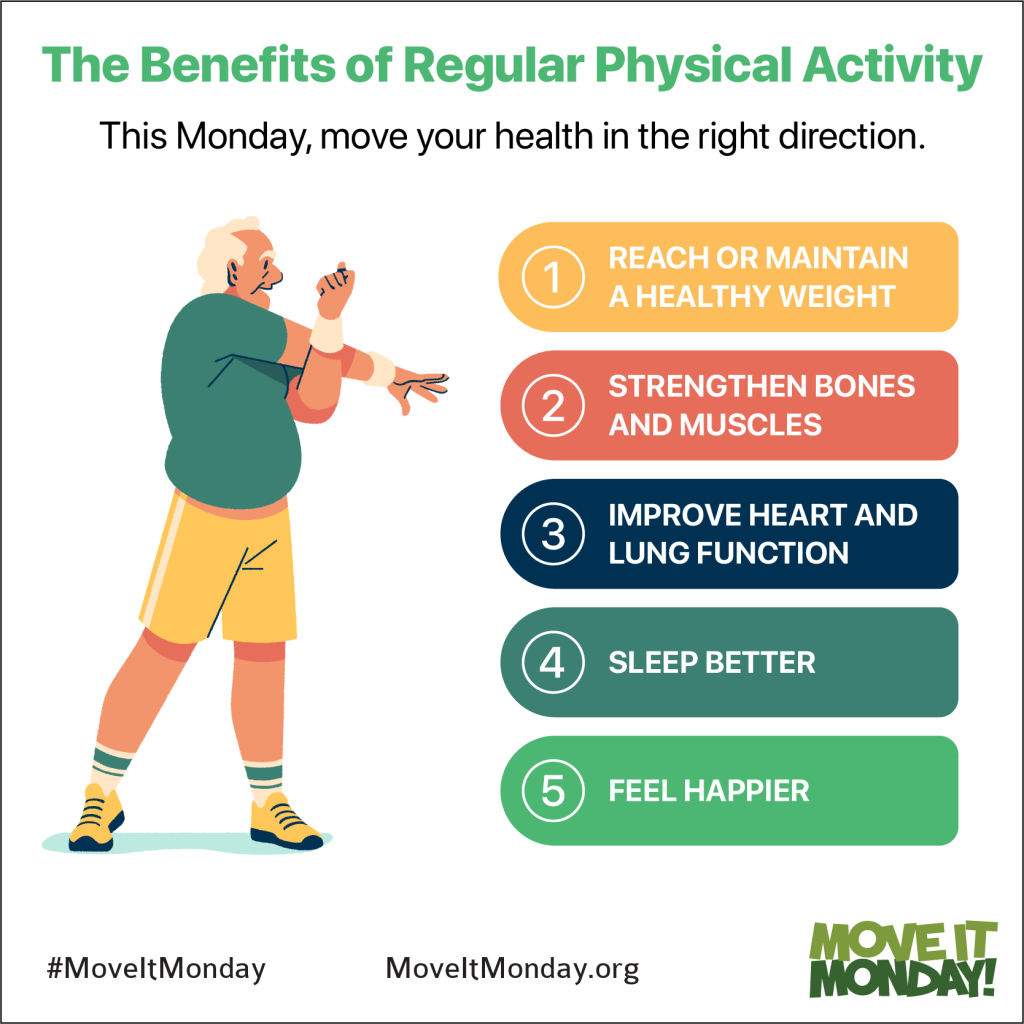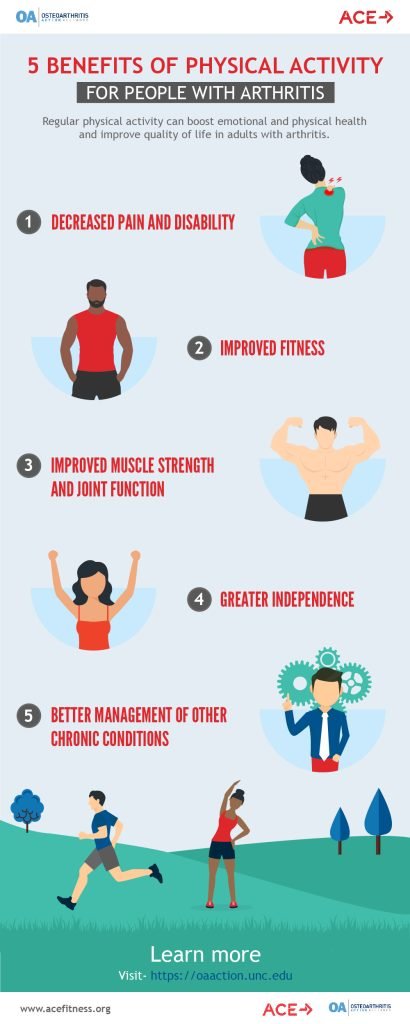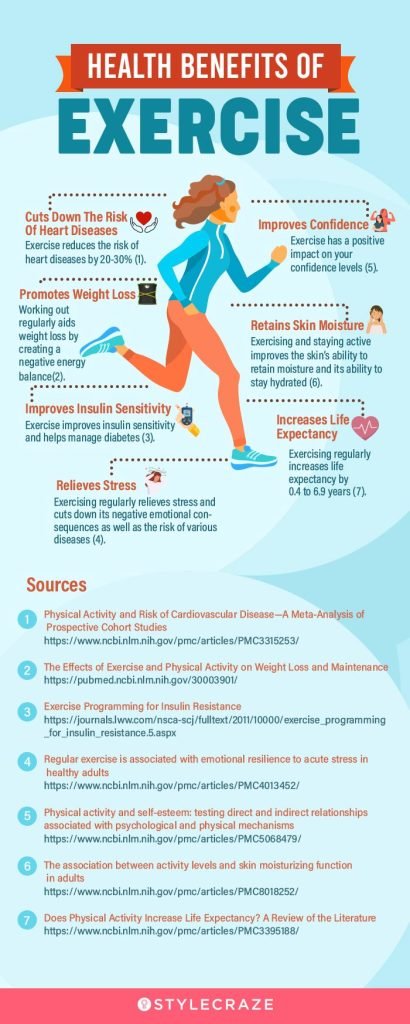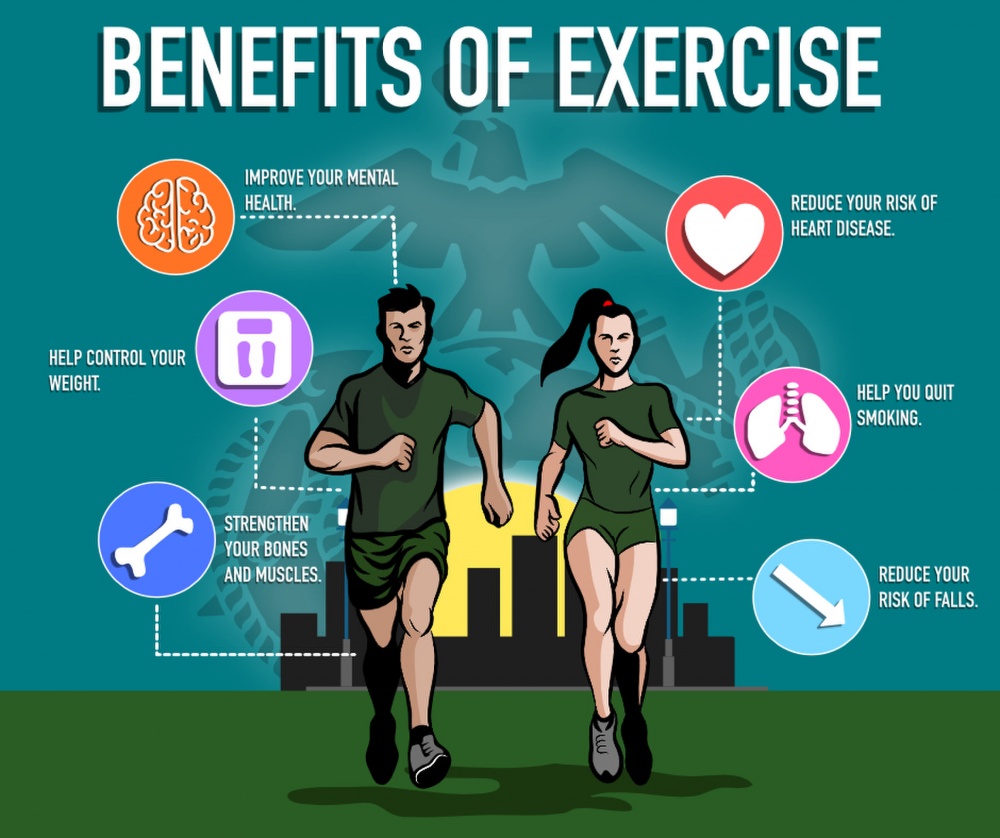is vital for a healthy lifestyle, and in this article, you’ll learn why. From improving cardiovascular health to reducing the risk of chronic diseases, regular exercise offers numerous benefits. We’ll explore the impact of exercise on mental well-being and how it can boost your mood and improve sleep quality. Additionally, we’ll discuss the role of exercise in maintaining a healthy weight and improving overall physical strength. Whether you’re a seasoned fitness enthusiast or just starting your exercise journey, understanding the importance of regular exercise is crucial for leading a long and fulfilling life.
Benefits of Regular Exercise
Regular exercise is not only important for maintaining a healthy weight, but it also offers a wide range of benefits for both your physical and mental well-being. Engaging in regular physical activity can improve your overall health and contribute to a better quality of life. Here are some key benefits of incorporating exercise into your daily routine.
Improves Physical Health
One of the most obvious benefits of regular exercise is improved physical health. When you engage in physical activity, your heart rate increases, promoting better cardiovascular health. Regular exercise also helps to strengthen your muscles and bones, reducing the risk of injuries and conditions such as osteoporosis. It can also help to lower blood pressure and cholesterol levels, decreasing the risk of heart disease and stroke.
Additionally, exercise plays a vital role in maintaining a healthy weight. When combined with a balanced diet, regular exercise helps to burn calories and build lean muscle mass. This can prevent excessive weight gain and reduce the risk of obesity, which is associated with numerous health problems, including diabetes, high blood pressure, and certain types of cancer.
Enhances Mental Well-being
Exercise is not only beneficial for your physical health; it also has a positive impact on your mental well-being. When you exercise, your brain releases endorphins, which are natural chemicals that boost your mood and make you feel good. This can help to relieve stress, reduce feelings of anxiety and depression, and improve overall mental health.
Regular exercise has also been linked to improved cognitive function. It can enhance your memory, attention span, and problem-solving skills. This is due to the increased blood flow and oxygen to the brain, which in turn promotes the growth of new brain cells.
Boosts Immune System
Regular exercise can give your immune system a significant boost. When you engage in physical activity, your body produces more antibodies and white blood cells, which are essential in fighting off infections and diseases. This can help to reduce the risk of common illnesses such as colds and flu.
Exercise also improves the circulation of immune cells in your body, allowing them to move more freely throughout your system and respond to any potential threats more effectively. By strengthening your immune system, regular exercise can help you stay healthier and recover faster from illnesses.
Increases Energy Levels
If you often find yourself feeling tired and lacking energy, incorporating regular exercise into your routine can help to combat fatigue. When you exercise, your body releases endorphins, which can provide a natural energy boost. It also improves blood flow and oxygen delivery to your muscles and organs, increasing your overall energy levels.
Furthermore, regular exercise can improve your sleep quality. It helps to regulate your sleep-wake cycle, allowing you to fall asleep quicker and experience deeper, more restorative sleep. By getting enough restorative sleep, you will wake up feeling refreshed and energized, ready to take on the day.
Types of Regular Exercise
Now that we’ve discussed the benefits of regular exercise, let’s explore some different types of exercises that you can incorporate into your fitness routine. It’s important to vary your workouts to target different muscle groups and prevent boredom. Here are some popular types of exercises to consider:
Cardiovascular Exercises
Cardiovascular exercises, also known as cardio exercises, are activities that increase your heart rate and get your blood pumping. These exercises are great for improving your cardiovascular health, increasing endurance, and burning calories. Examples of cardiovascular exercises include brisk walking, jogging, cycling, swimming, and aerobic classes.
Strength Training
Strength training exercises involve using resistance, such as weights or resistance bands, to build and strengthen your muscles. These exercises help to increase muscle mass, improve bone density, and boost metabolism. Strength training can be done using free weights, weight machines, or even your own body weight. Some common strength training exercises include squats, push-ups, lunges, and bicep curls.
Flexibility Exercises
Flexibility exercises, also known as stretching exercises, help to improve your range of motion and prevent injuries. These exercises involve stretching your muscles and tendons, increasing their elasticity and reducing muscle stiffness. Examples of flexibility exercises include yoga, Pilates, stretching routines, and tai chi.
High-Intensity Interval Training (HIIT)
High-Intensity Interval Training, or HIIT, is a form of cardiovascular exercise that involves short bursts of intense activity followed by a brief rest period. This type of exercise is great for burning calories, improving endurance, and boosting metabolism. HIIT workouts can be done using various exercises, such as sprints, burpees, jumping jacks, and mountain climbers.
This image is property of media.defense.gov.
Effects of Sedentary Lifestyle
Living a sedentary lifestyle, which involves sitting or lying down for prolonged periods, can have detrimental effects on your health. It is important to be aware of the potential consequences of inactivity and make an effort to incorporate regular exercise into your daily routine. Here are some negative effects of a sedentary lifestyle:
Weight Gain and Obesity
One of the most notable effects of a sedentary lifestyle is weight gain and obesity. When you spend most of your time sitting or lying down, your body burns fewer calories, leading to weight gain. Over time, excess weight can contribute to obesity, which increases the risk of various health problems, including heart disease, type 2 diabetes, and certain types of cancer.
Increased Risk of Chronic Diseases
Engaging in regular exercise can help to reduce the risk of chronic diseases such as heart disease, diabetes, and certain types of cancer. On the other hand, a sedentary lifestyle significantly increases the risk of developing these diseases. Lack of physical activity can lead to high blood pressure, high cholesterol levels, insulin resistance, and inflammation, all of which contribute to the development of chronic diseases.
Decreased Muscle Mass
When you lead a sedentary lifestyle, your muscles are not regularly engaged, leading to muscle loss or atrophy. Over time, the lack of muscle mass can contribute to weakness and a decrease in overall functional abilities. This can make it more difficult to perform daily tasks and increase the risk of falls and injuries.
Reduced Cognitive Function
Prolonged sitting or inactivity can also have negative effects on your cognitive function. Research has shown that a sedentary lifestyle is associated with a higher risk of cognitive decline and dementia. Engaging in regular exercise, on the other hand, has been shown to improve cognitive function, including memory, attention, and problem-solving skills.
Setting Fitness Goals
When it comes to incorporating regular exercise into your lifestyle, setting fitness goals can help you stay motivated and focused. These goals provide a sense of direction and purpose, making it easier to track your progress and stay committed to your exercise routine. Here are some tips for setting and achieving fitness goals:
Defining Clear Objectives
Start by defining clear and specific objectives that you want to achieve through regular exercise. Whether it’s losing weight, improving endurance, increasing muscle strength, or simply staying active, be clear about what you want to accomplish. This will help you stay focused and motivated throughout your fitness journey.
Creating a Realistic Plan
Once you have defined your objectives, create a realistic plan that outlines how you will achieve them. Consider factors such as your current fitness level, available time, and resources. Break down your goals into smaller, more manageable tasks and create a weekly or monthly exercise schedule. This will make it easier to track your progress and stay committed to your plan.
Tracking Progress
Tracking your progress is important to stay motivated and see how far you’ve come. Keep a journal or use fitness tracking apps to record your workouts, measurements, and any other relevant data. This will allow you to see your improvement over time and identify areas where you might need to make adjustments to your exercise routine.
Rewarding Achievements
Rewarding yourself for achieving your fitness goals can help to reinforce positive behaviors and motivate you to continue. Set small milestones along the way and reward yourself when you reach them. This can be something as simple as treating yourself to a new workout outfit, a massage, or a day off from your exercise routine.

This image is property of edushore.files.wordpress.com.
Overcoming Exercise Barriers
While regular exercise offers numerous benefits, many individuals face barriers that make it difficult to stick to a consistent exercise routine. Recognizing and addressing these barriers can help you overcome them and stay on track with your fitness goals. Here are some common exercise barriers and tips for overcoming them:
Lack of Time
One of the most common barriers to regular exercise is a lack of time. Between work, family obligations, and other responsibilities, finding time to exercise can be challenging. However, it is important to prioritize your health and make exercise a non-negotiable part of your daily routine. Look for ways to make exercise more time-efficient, such as incorporating short, intense workouts or fitting in physical activity during your lunch breaks. Also, consider waking up earlier or rearranging your schedule to make time for exercise.
Lack of Motivation
Another common barrier is a lack of motivation. It can be challenging to find the drive to exercise, especially when you’re feeling tired or stressed. To overcome this, find activities that you enjoy and make exercise fun. Try new workouts, join group classes, or listen to music or podcasts while exercising. Additionally, finding an exercise buddy or using a fitness app that provides accountability and support can help to keep you motivated.
Physical Limitations
Physical limitations, such as chronic pain or injuries, can make it difficult to engage in certain types of exercises. However, there are usually alternative exercises or modifications that can be done to accommodate these limitations. Consult with a healthcare professional or a qualified fitness trainer who can help you find safe and effective exercises that work for your specific needs.
Expense of Gym Memberships
The cost of gym memberships or exercise equipment can be a barrier for some individuals. However, there are plenty of budget-friendly alternatives to consider. Look for free or low-cost community fitness programs, take advantage of free trials at local gyms, or explore outdoor activities such as hiking, jogging, or cycling. Additionally, there are many online workout programs or fitness apps that offer affordable or even free exercise routines that can be done from the comfort of your own home.
Tips for Staying Consistent
Consistency is key when it comes to reaping the benefits of regular exercise. Here are some tips to help you stay consistent with your exercise routine:
Finding an Enjoyable Activity
One of the most important factors in staying consistent with exercise is finding activities that you enjoy. Choose exercises that you look forward to and that bring you pleasure. This can make it easier to stick with your routine and turn exercise into a sustainable habit.
Creating a Schedule
Set aside specific times for exercise and treat them as non-negotiable appointments. Make them a priority in your daily schedule and avoid making excuses to skip workouts. Consistency breeds habit, so the more you stick to your schedule, the easier it will become to maintain a regular exercise routine.
Finding a Workout Buddy
Exercising with a friend or family member can provide added motivation and accountability. Having a workout buddy can make exercising more enjoyable and provide support on days when you feel less motivated. You can encourage each other, celebrate achievements together, and hold each other accountable to stay on track with your exercise goals.
Mixing Up Your Routine
To prevent boredom and keep your motivation high, mix up your exercise routine regularly. Try new activities, change the intensity or duration of your workouts, or experiment with different types of exercises. This will keep your workouts interesting and challenge your body in new ways.

This image is property of www.mondaycampaigns.org.
Best Time to Exercise
While there is no one-size-fits-all answer to the best time to exercise, considering personal preferences and matching energy levels can help you optimize your workouts. Here are some factors to consider:
Morning vs. Evening
Some people prefer to exercise in the morning, as it allows them to start the day energized and mentally focused. Morning workouts can also help to jump-start your metabolism and give you a sense of accomplishment before the day even begins.
Others may find that exercising in the evening is more suitable for them. Evening workouts can help to relieve stress accumulated throughout the day and promote a better night’s sleep.
Ultimately, the best time to exercise is the time that works best for you and aligns with your schedule and energy levels.
Considering Personal Preferences
Consider your personal preferences when deciding on the best time to exercise. Some individuals are early birds who prefer to start their day with a workout, while others are night owls who thrive during evening exercise sessions.
Experiment with different times of the day and pay attention to how your body feels during and after exercise. This will help you determine when you have the most energy and when you can perform at your best.
Matching Energy Levels
Listening to your body and matching your exercise routine to your energy levels is important for optimizing your workouts. If you feel more energetic in the morning, schedule your more intense or challenging workouts for that time. If you tend to experience an energy slump in the afternoon, opt for lighter exercises or activities that help you recharge.
By considering your personal preferences and matching your exercise routine to your energy levels, you can maximize the benefits of regular exercise.
Safe and Effective Exercise Practices
When engaging in regular exercise, it is important to prioritize safety and adopt practices that will help you get the most out of your workouts. Here are some safe and effective exercise practices to keep in mind:
Warming Up and Cooling Down
Before starting any exercise session, it is crucial to warm up your muscles and prepare your body for physical activity. This can be done through light aerobic exercises or dynamic stretches that gently increase your heart rate and warm up your muscles.
Similarly, cooling down after a workout is essential to gradually bring your heart rate and body temperature back to normal. It allows your muscles to relax and helps prevent muscle soreness.
Proper Form and Technique
Performing exercises with proper form and technique is essential to prevent injuries and maximize the benefits of each exercise. If you’re not familiar with a particular exercise or technique, consider working with a qualified fitness professional who can guide and assist you.
It’s important to start with lighter weights or modify exercises as needed. As you become more comfortable and confident, gradually increase the intensity or weight to challenge yourself.
Gradual Progression
When starting an exercise routine, it is important to start slowly and gradually increase the frequency, intensity, and duration of your workouts. This gradual progression helps to prevent injuries, allows your body to adapt, and ensures continued progress over time.
Avoid pushing yourself too hard, too soon. Listen to your body and give yourself time to recover between workouts. It’s better to exercise consistently at a moderate intensity than to push yourself too much and risk burnout or injury.
Listening to Your Body
It’s important to listen to your body and pay attention to how it responds to exercise. If you experience pain, dizziness, or any unusual symptoms during or after a workout, it’s important to stop and seek medical attention if needed.
Rest and recovery are critical components of staying safe and preventing overuse injuries. If you feel excessively fatigued or your muscles are constantly sore, it may be a sign that you need to reduce the intensity or duration of your workouts and allow your body to recover properly.

This image is property of oaaction.unc.edu.
Importance of Exercise for Different Age Groups
Exercise is important for individuals of all ages, as it offers numerous health benefits. Here’s a look at the importance of exercise for different age groups:
Children and Adolescents
Regular exercise is crucial for children and adolescents, as it helps to promote healthy growth and development. It contributes to the formation of strong bones, muscles, and joints. Physical activity also improves cardiovascular health, enhances coordination and balance, and helps to maintain a healthy weight.
Additionally, exercise promotes proper cognitive development, improves concentration and focus, and enhances overall mental well-being. Encouraging children and adolescents to participate in regular physical activity sets the foundation for a healthy lifestyle in adulthood.
Adults and Middle-aged Individuals
For adults and middle-aged individuals, regular exercise is essential for maintaining overall health and preventing chronic diseases. Engaging in physical activity helps to manage weight, reduce the risk of heart disease, stroke, and certain types of cancer, and improve mental well-being.
Exercise also promotes better sleep quality, reduces stress, increases energy levels, and improves cognitive function. It allows adults to maintain mobility and independence as they age, preventing the loss of muscle mass and strength.
Senior Citizens
Regular exercise is particularly important for senior citizens, as it helps to maintain bone density, muscle mass, and joint flexibility. Engaging in physical activity can help to prevent falls and injuries, improve balance and coordination, and enhance overall functional abilities.
Exercise also plays a key role in managing chronic conditions that become more prevalent in older age, such as arthritis, heart disease, and osteoporosis. It can help to alleviate symptoms, improve mobility, and maintain a good quality of life.
Conclusion
Incorporating regular exercise into your daily life is essential for maintaining optimal health and well-being. It offers numerous benefits for your physical and mental well-being, including improved cardiovascular health, increased energy levels, enhanced cognitive function, and strengthened immune system.
By understanding the different types of exercises available, as well as the potential negative effects of a sedentary lifestyle, you can make informed choices and prioritize regular physical activity in your life. Set realistic fitness goals, overcome exercise barriers, and adopt safe and effective exercise practices to ensure continued success on your fitness journey.
Whether you’re young or old, maintaining an active lifestyle is crucial for your overall health. Start small, stay consistent, and enjoy the countless benefits that regular exercise brings. Your body and mind will thank you!

This image is property of cdn2.stylecraze.com.




